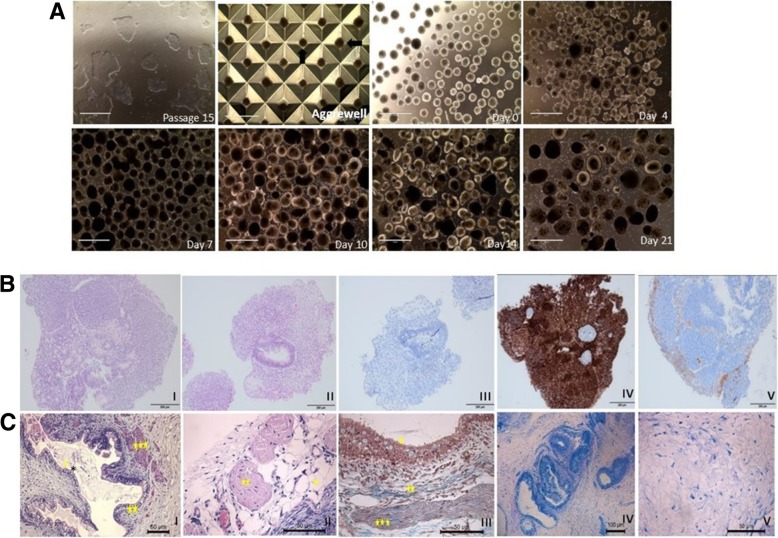Fig. 4.
Trilineage differentiation potential of established iPSC lines of osteopetrosis patients. a Formation of embryoid bodies from iPSC lines in AggreWells and morphological changes observed during spontaneous differentiation (Patient 1-IPS-P15# 8a-Epi). Cell clumps within the Aggrewell pointed out with arrows. b H&E and immunohistochemical staining of differentiated embryoid bodies on day 21; I—mesenchymal and neuroepithelial area (H&E); ii—mesenchymal and primitive epithelial area (H&E); III—negative OCT4 staining; IV—positive vimentin staining indicating mesodermal differentiation; V—positive synaptophysin staining indicating ectodermal differentiation (Patient 1-IPS-P15# 8a-Epi). c H&E and immunohistochemical staining of teratoma sections. Tissue derivatives indicative of the three germ layers observed, I, III: *epithelial and goblet cells, **connective tissue, ***smooth muscle; II: *epithelial and goblet cells,**peripheral nerve; IV: connective tissue and goblet cells; V: gray matter of central nervous system (I, II H&E, III Mallory Trichrom, IV, V Toluidin) (Patient 1-IPS-P20#11c-SeV)

